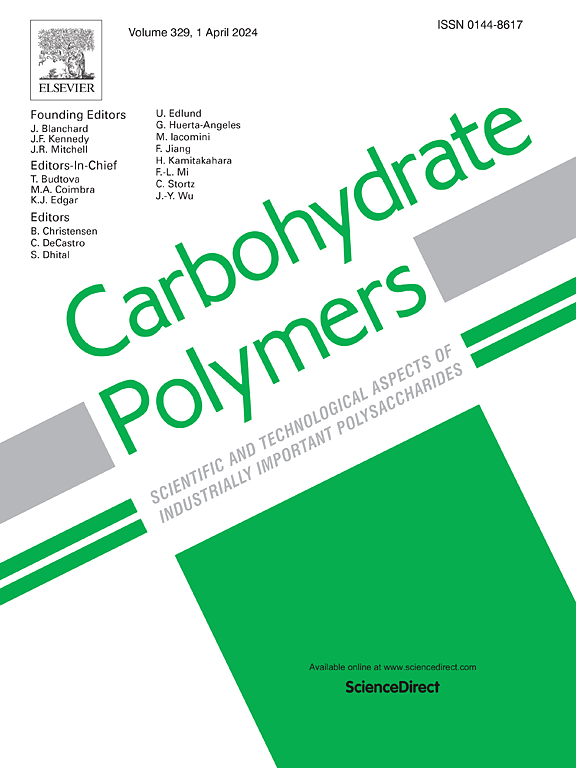Manipulating gelatinization, retrogradation, and hydrogel properties of potato starch through calcium chloride-controlled crosslinking and crystallization behavior
IF 10.7
1区 化学
Q1 CHEMISTRY, APPLIED
引用次数: 0
Abstract
Due to the inherent susceptibility of single-polymer starch molecules to retrogradation, the practical application of green starch hydrogels is remarkably limited. Here, we propose a simple strategy to achieve the multifunctionality of starch hydrogels by employing polymer amorphization. Calcium chloride was used to promote the gelatinization of starch granules, disrupting their crystalline structure without the need for heating. Additionally, during the initial stage of hydrogel formation, the effects induced by calcium chloride effectively suppressed starch retrogradation. This suppression induced the formation of uniform aggregates of polymer chains, enabling tunable polymer amorphization and the coexistence of free hydroxyl and hydrogen-bonding hydroxyl groups. The multiscale microstructure yielded starch-based hydrogels with favorable water-retention capabilities, high transparency (86.39 %), improved self-adhesive and self-healing properties, excellent stretchability (146 %), tissue-like ultra-softness (Young's modulus <10 kPa), and anti-freezing properties (<−50 °C). Overall, this study systematically elucidates the underlying mechanisms of CaCl2 impacts on starch gelatinization, retrogradation, and hydrogel properties, paving the way for the on-demand functionality of starch hydrogels through regulated crystallization.

求助全文
约1分钟内获得全文
求助全文
来源期刊

Carbohydrate Polymers
化学-高分子科学
CiteScore
22.40
自引率
8.00%
发文量
1286
审稿时长
47 days
期刊介绍:
Carbohydrate Polymers stands as a prominent journal in the glycoscience field, dedicated to exploring and harnessing the potential of polysaccharides with applications spanning bioenergy, bioplastics, biomaterials, biorefining, chemistry, drug delivery, food, health, nanotechnology, packaging, paper, pharmaceuticals, medicine, oil recovery, textiles, tissue engineering, wood, and various aspects of glycoscience.
The journal emphasizes the central role of well-characterized carbohydrate polymers, highlighting their significance as the primary focus rather than a peripheral topic. Each paper must prominently feature at least one named carbohydrate polymer, evident in both citation and title, with a commitment to innovative research that advances scientific knowledge.
 求助内容:
求助内容: 应助结果提醒方式:
应助结果提醒方式:


